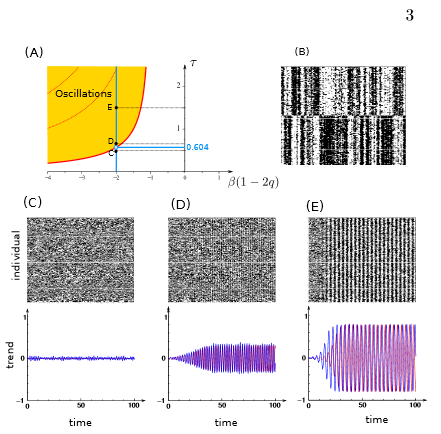Hipster Style: The Mathematical Equation That Makes All Hipsters Look Alike

If you get off the Bedford Avenue L train subway stop in the unofficial East Coast birthplace of hipsters — Williamsburg, Brooklyn — chances are you’ll see a parade of flannel-wearing, fixie-riding, Pabst Blue Ribbon (PBR) drinkers walking down the street. The clones of hipsters characterize themselves by the undesirability to conform to mainstream culture, but are they just non-confirming conformists? According to a paper "The Hipster Effect: When Anti-Conformists All Look The Same," all hipsters end up looking the same because they have a tendency to keep making the same choices when they’re “too slow in detecting the trends.”
This belief stems from the ability to recognize trends in others based on your proportional distance from those people. For example, the trends your close friends follow is predictable because you interact with them frequently. However, it’s difficult to stand out at a loft party full of people you don’t know, meaning you are less sure of the likelihood they will be wearing the same trend you are. This suggests hipsters, just like the rest of the population, cannot know what other people decide in real time.
In an effort to resolve the hipster paradox, Professor Jonathan Touboul, a mathematical neuroscientist at the Collège de France in Paris, sought to study a canonical model of statistical physics, enriched by adding the delays necessary for information to be communicated. In other words, Touboul explored the time it takes for a trend to begin to take traction and the time hipsters begin to follow it. He used a theory known as Hopf bifurcation.
The theory observes how oscillations — in this case swinging between trends toward the mainstream and how hipsters track these trends — change over time, according to the Daily Mail. It is in the delay of recognizing a trend that causes stronger oscillations and as time continues, these oscillations become larger. Touboul told Vocativ: “If you take large sets of interacting individuals — whether hipsters, stock traders, or any group that decides to go against the majority — by trying to be different, they will ultimately all do the same thing at the same time.”


Uncovering this paradox “goes beyond finding the best suit to wear this winter.” Hipsters have a desire of being non-conformists as they conform to non-conformity. They avoid labels and being labeled, yet they all dress the same and act the same to conform to this very same non-conformity they all share. A hipster style actually goes against “hipster beliefs.”
There has been a rise in facial hair transplant among men due to the growing popularity of the hipster beard trend, Medical Daily previously reported. Whether it’s groomed like Brad Pitt, or unkempt like Bon Iver, Brooklyn hipsters and advertising executives have all lined up to undergo the costly procedure in record numbers. The demand for the hipster beard extends far beyond America’s beard-centric neighborhoods.
In reality, a true hipster does not exist. In order to be a real hipster, you would need to be constantly changing and adapting your style, personality, and authenticity as an immediate response to the current trend. Touboul’s study suggests this is impossible and too difficult to attain. It can become physically and mentally excruciating staying on top of the mainstream trends you are trying to resist. This is why hipsters make the same choices as other hipsters and do quickly adapt when non-hipsters start to follow these choices as well.
Touboul revealed, “Scientifically, I cannot claim that this represents all hipsters.” “I just thought the metaphor was kind of enlightening.” His “hipster effect” may help explain why all flannel-wearing, fixie-riding, beard-growing, PBR-drinking hipsters all look like the next one around the block.
Source: Touboul J. The hipster effect: When anticonformists all look the same. The Mathematical Neuroscience Laboratory, CIRB. 2014.



























